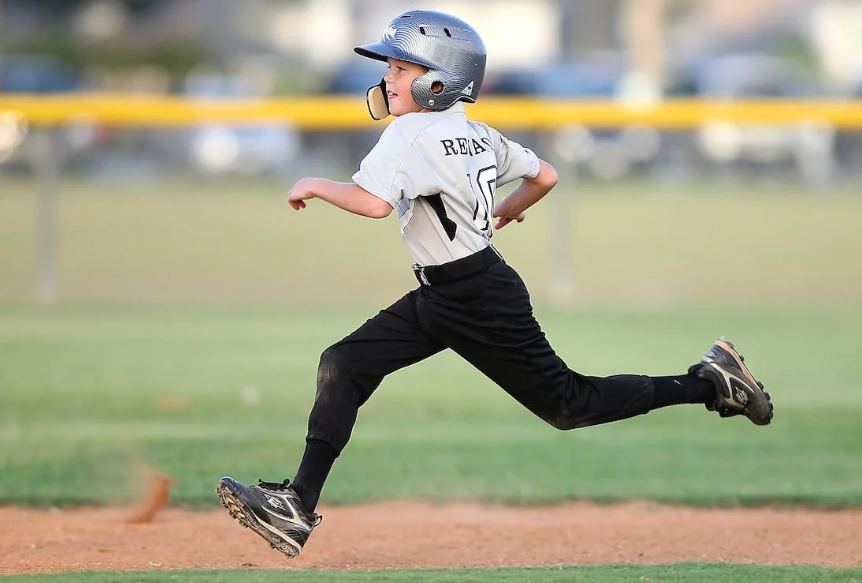Mindfulness Activities for Children
Lets talk about mindfulness activities for you or your children to start using today.

Selfpause Affirmation App
Download the app to get 1,000’s of affirmation meditations and everything you need to write, record and listen to your own.
Mindfulness activities for children can be simple ways to teach them how to relax and focus. Children can imitate the activities by following instructions, so they can learn to focus on the process themselves. For example, parents can guide younger children to use their senses to feel what they are feeling. Older children can use an audio app to guide them through the process.
Simple ways to practice mindfulness

Mindfulness is a practice that focuses on the present moment. To practice mindfulness, simply sit in a comfortable position, with your spine straight, and focus on your breathing. As thoughts come and go, observe them without judging them. If your mind begins to wander, bring it back to a state of awareness. Breathe deeply and scan your body, noticing any tension or thoughts. You can use a timer to remind yourself to return to your state of awareness.
Other simple ways to practice mindfulness include paying attention to the things around you. You can be mindful of your walking or listening to the sounds around you, while paying attention to the textures of your clothes or the breeze on your skin. You can also listen to a guided mindfulness audio program to help you practice mindfulness.
Practice mindfulness is also useful in dealing with negative emotions. It helps you stay in the present moment, which can be difficult in times of pain or heartbreak. For instance, you might be angry and want to let your feelings out. But if you can maintain your calm, you can manage your anger in more constructive ways.
Mindfulness can help you deal with everyday stress and anxiety. Stress can affect the body and cause digestive problems, pain, and memory problems. If you fail to destress, these symptoms will only worsen, which means that it’s vital to practice mindfulness whenever you can. A busy lifestyle can be a big contributor to stress, so it’s important to find time to relax.
If you want to introduce mindfulness to kids, consider making a craft or game that focuses on this practice. Kids can draw pictures of activities that help them feel calm. For a more creative approach, you can also give your kids printable mindfulness cards. Another great resource is GoZen, a website dedicated to bringing awareness to your daily life. The site also offers books, mindfulness programs, and printable mindfulness resources.
Benefits of practicing mindfulness

Research has shown that the practice of mindfulness can improve the immune system, reduce stress and promote better health. In cancer patients, mindfulness exercises have been proven to reduce fatigue, enhance post-traumatic growth and reduce symptoms of stress. They have also been shown to improve immune function and protect the body from harmful microbes and disease.
Mindfulness activities can help individuals to become more self-aware and control their emotions. However, integrating mindfulness into your daily routine may be difficult for some people. This is why it’s recommended to set aside at least 10 minutes per day for these activities. Creating a schedule or using your smartphone as a reminder can make this practice more manageable.
Practicing mindfulness can be a great way to help young people develop better social-emotional skills. It can also improve their ability to focus. Children can use mindfulness as a tool to help them cope with stress and frustration. In addition, it helps kids and teens develop a more positive outlook on life.
In addition to reducing stress, mindfulness exercises can help adults overcome their daytime fatigue. They can also reduce anxiety and improve relationships. Older adults may also benefit from daily mindfulness activities. They can also use mindfulness activities to lose weight. Unlike a traditional lifestyle change program, mindfulness programs require a certain amount of practice on a daily basis. These programs may include weekly group classes and daily home mindfulness exercises. These programs typically last eight weeks, and they have been proven to be effective for decreasing the symptoms of stress and emotional exhaustion.
Another great way to practice mindfulness activities is to take a daily walk. You can start by taking a ten to fifteen-minute walk, paying attention to details and avoiding distractions. Try to find a place with little or no traffic, where you can be alone. In time, you’ll find this activity to be second nature to you.
Group mindfulness exercises

Group mindfulness exercises are a great way to reduce stress and connect with others. These exercises also help you learn to be more present and kind to yourself. In this article, I will show you a few ways to use group mindfulness exercises. In addition, you’ll learn some tips for teaching others to practice mindfulness.
Group mindfulness exercises are as effective as individual therapy, and have been proven to be as helpful for social anxiety and other conditions. This type of exercise requires patience and a commitment to practice. The benefits of group mindfulness exercises are great for people with social anxiety, overall stress, and other mental disorders. If you’d like to learn how to do these exercises, join a group or practice them with a qualified instructor.
One popular group mindfulness exercise involves directing people’s attention to various parts of the body. The facilitator will guide the participants’ awareness through the body, asking them to note any areas where they don’t feel anything or areas of hypersensitivity. Afterward, participants can gradually open their eyes and settle into a comfortable sitting position.
Another exercise can help you focus on a particular food. During the “raisin exercise,” participants should lie flat on their backs with their palms facing upward and their feet slightly apart. This is a form of guided meditation that can help people learn to pay attention to their food. The facilitator can direct the participants during the exercise or lead the group in a guided meditation. Regardless of whether the group is small or large, it’s essential that everyone enjoys the experience and the practice.
In addition to these benefits, group mindfulness exercises can help reduce stress and anxiety and increase a sense of well-being in students. They can also enhance classroom climate and help students develop an awareness of their shared internal experiences. These benefits will improve their academic performance and help them cope with the stress of a university education.
Practicing mindfulness with the five senses

To practice mindfulness, it is helpful to use your senses to help you focus on the present moment. Sit quietly in a comfortable position and bring awareness to each sense for about a minute. Close your eyes and focus on each sense. By bringing your attention to each sense, you will become more aware of how your body feels and the sensations around you.
You can also practice mindfulness by noticing the smells of the environment around you. Using your sense of smell, you can begin to recognize the smells of food, flowers, and herbs around you. You can also use your sight to become more aware of colors, shapes, and textures.
Practice mindfulness by engaging each sense individually or as a family. To start a practice, find a comfortable position and engage all five of your senses. Take note of your surroundings and take note of any sounds that are present. Try to recognize even the smallest buzz in the air. You can also keep strong smelling items with you to trigger mindfulness. Lavender, for example, is a good scent for invoking mindfulness. It is also helpful to wear perfume, which gives your body a soothing scent.
Using all five senses to practice mindfulness can help you deal with stressful situations by preventing you from ruminating on the past or worrying about the future. You can even perform these exercises anywhere you want, because no one will know that you are doing them. When you are practicing mindfulness with the five senses, you are consciously aware of all aspects of your experience, including your feelings, thoughts, and physical sensations.
Teaching mindfulness to children

Mindfulness activities are a great way to help children deal with difficult emotions. They can improve academic performance, reduce stress, and improve their ability to resolve conflicts. They can also help kids develop a positive sense of self. These activities can be simple, such as taking a moment to focus on a task at hand. Kids can also benefit from learning to use mantras to focus their minds and bodies.
To make mindfulness activities more engaging for children, use different sensory activities. One activity involves walking while listening to a bell ringing in the background. The sound can be either real or artificial. You can find a meditation app with recorded bell sounds and singing bowl sounds. If your child doesn’t respond to either sound, you can try another one.
Children can also practice mindfulness by participating in games like the What Are You Doing? game, which helps them to become more aware of their actions. This activity can be shared with the whole family and is helpful for helping children recognize and process their own emotions. A mindfulness worksheet can also help them identify whether they are being mindful or unmindful.
Breathing is another great mindfulness activity. By focusing on the act of breathing, students are forced to pay attention to their bodies and can become more mindful. Another simple activity is a breathing wand, which can be made from simple household objects like a toilet paper roll or paper towel roll and decorated with ribbons. These activities can help students learn breathing strategies that can benefit them for the rest of their lives.
Another activity that is popular among kids is coloring. Coloring sheets are a great way for kids to refocus, and coloring books can help them to relax as well. Kids can do this activity for fun or for school and the benefits can last well after the activity ends.
Our Top FAQ's
Some mindfulness activities that can be done with children include deep breathing exercises, mindful listening, mindful movement or yoga, and sensory awareness activities such as observing nature or paying attention to the present moment. Other options might include guided meditations, coloring or drawing, and gratitude exercises.
Mindfulness activities can benefit children in a number of ways. They can help children develop focus, self-regulation, and social-emotional skills, as well as reduce stress and improve overall well-being. Children who practice mindfulness may also have an easier time managing their emotions, making better decisions, and forming positive relationships with others.
Parents and caregivers can introduce mindfulness to children in a number of ways. One option is to start with simple mindfulness activities that are easy for children to understand and follow, such as deep breathing exercises or sensory awareness activities. It can also be helpful to model mindfulness behavior and explain the benefits of mindfulness to children.
There are no specific age requirements for introducing mindfulness to children, but it may be more challenging for younger children to understand and practice mindfulness techniques. In general, it’s a good idea to keep mindfulness activities age-appropriate and to gradually introduce more complex techniques as children get older.
Mindfulness activities can easily be incorporated into a child’s daily routine. For example, a parent or caregiver might start the day with a short mindful breathing exercise, take a few mindful breaks throughout the day, or end the day with a relaxation or gratitude activity. It’s also a good idea to set aside dedicated time for mindfulness activities, such as a regular meditation or yoga session.
